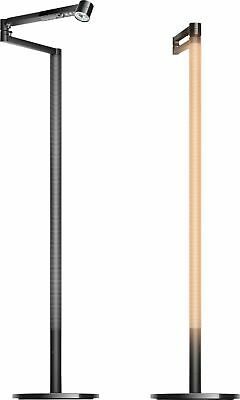-40%
The Great Pyramid of Giza
$ 14.25
- Description
- Size Guide
Description
3D Printed The Great Pyramid of Giza, printed with Wood infused plastic, High Quality.Dimensions :
53X50X38 MM
Summary
What we know about Egypt's ancient civilization comes from what was left behind. Archaeologists scour the region for remnants to piece together pictures of the past, but some clues are hard to miss: at six and a half million ton, taller than the Statue of Liberty, and as wide as 10 football fields, the Great Pyramid of Giza can be seen from space.
Now with MakerBot's second curriculum unit, teachers and students, can download and 3D print their very own model for use in the classroom!
DAY 1: Messages in Stone
Explain to your students where the pyramids located, how big they are, and ask them what these structures tell us about ancient Egyptians by observing and analyzing tomb artifacts. Search the following images:
Mummy case
Mummy mask
Mummy
Peasants Driving Cattle and Fishing
Ka aper with Funerary Offerings
Papyrus of Nes-min, Weighing heart of the dead man
Mummy mask
Chantress Mummy coffin
Remind your students that ancient Egyptians built pyramids as tombs for their pharaohs. But what kind of person would want such a great structure built? Proud? Self-important? Powerful?
See examples of pharaohs and court dynastic figures available through Exploring Ancient World Cultures, or searching online for images of the following:
Amenhotep III
Amenemhat III
Statute of Minemheb
The pyramids contained chambers filled with expensive objects that were buried with furniture, jewelry, games, and food. Why did the pharaohs need these things? (Afterlife)
The ancient Egyptians had no cranes or machines to help them move and cut the stone blocks used in the pyramids. They had to do it all by hand. Many of the blocks weighed the same as 25 refrigerators. What does this tell us about the ancient Egyptians? Ask your students, how do they suppose they were able to move these huge blocks?
The pyramids pointed toward the sky, which delivers another message about the ancient Egyptians. (the Egyptians believed that their pharaoh was a god and that he would rise up and join the other gods after his death. He would symbolically climb the pyramid's sloping sides to the sky, where he would live forever.)
Whether or not the pharaohs lived forever, their stone structures endure. More than 4,000 years after they were built, the pyramids of the ancient Egyptians continue to be monuments with a message.
DAY 2: Scale of the Structures
Build around 2560 B.C., the Great Pyramid of Giza is the last survivor of the Seven Wonders of the World, and until the early 20th century was the tallest building in the world.
The Great Pyramid dominates the plateau of Giza. Students can get a sense of the scale and magnificence of the pyramids from virtual reality views available through Pyramids: The Inside Story and on Nova: Pyramids.
Building the Great Pyramid was a huge task. Your students can learn about it by watching the flash animation at the British Museum's Ancient Egypt site.
Here are some quick facts:
Height: taller than the Statue of Liberty.
Weight: more than 2 million blocks of stone, each about 2.5 tons (the weight of about 25 refrigerators)
steep of the sides
Width at the base: approximately 10 football fields.
DAY 3: What is an Artifact?
Tell your students that they will dig into the past to find clues about lost civilizations. People who do this kind of job have a special name. Do any of your students know what they are called? (Archaeologists, from the Greek word, arkhaio meaning ancient.)
Archaeologists search the earth for evidence of past civilizations. Like digging detectives, they try to find clues about how people used to live. Clues can come in all shapes and sizes. Show the students these artifacts from the following websites:
Carved wall relief
Palette
Sculpture
Haremhab statue
Coffin
Jewelry
Tomb
Mention that all of these things are called artifacts. An artifact is something created by humans usually for a practical purpose.
Use this definition with your students to brainstorm on examples of familiar artifacts. Where did they see these artifacts? When did they originally exist?
Arrange for your students to locate Egypt on a map.
Now that students have located the pyramids, let them be virtual archaeologists and find out what the pyramids tell us about the ancient Egyptians.
Assessment
Turn back to the learning objectives for this lesson: What do the pyramids and the artifacts found in them tell us about ancient Egyptians' attitudes toward death? What do they tell us about life in ancient Egypt?
Assign the following activities to teams to research and present findings to their classmates.
Team Geographers: Research the geographic location of the Great Pyramid of Giza and determine the environmental conditions of the time in which it was constructed.
Team Architects: Determine measurement, material, and construction methods used to build the Great Pyramid of Giza.
Team Archaeologists: Identify artifacts found within and around the Great Pyramid of Giza, then determine their function(s).
Team Historians: Create a timeline for the period when pyramids were created. Record rulers, their dynasty, and identify other positions held by Egyptians during the time.
Then, students can collectively construct an Ancient Egypt timeline.
Made from this design :
https://www.thingiverse.com/thing:296260
















